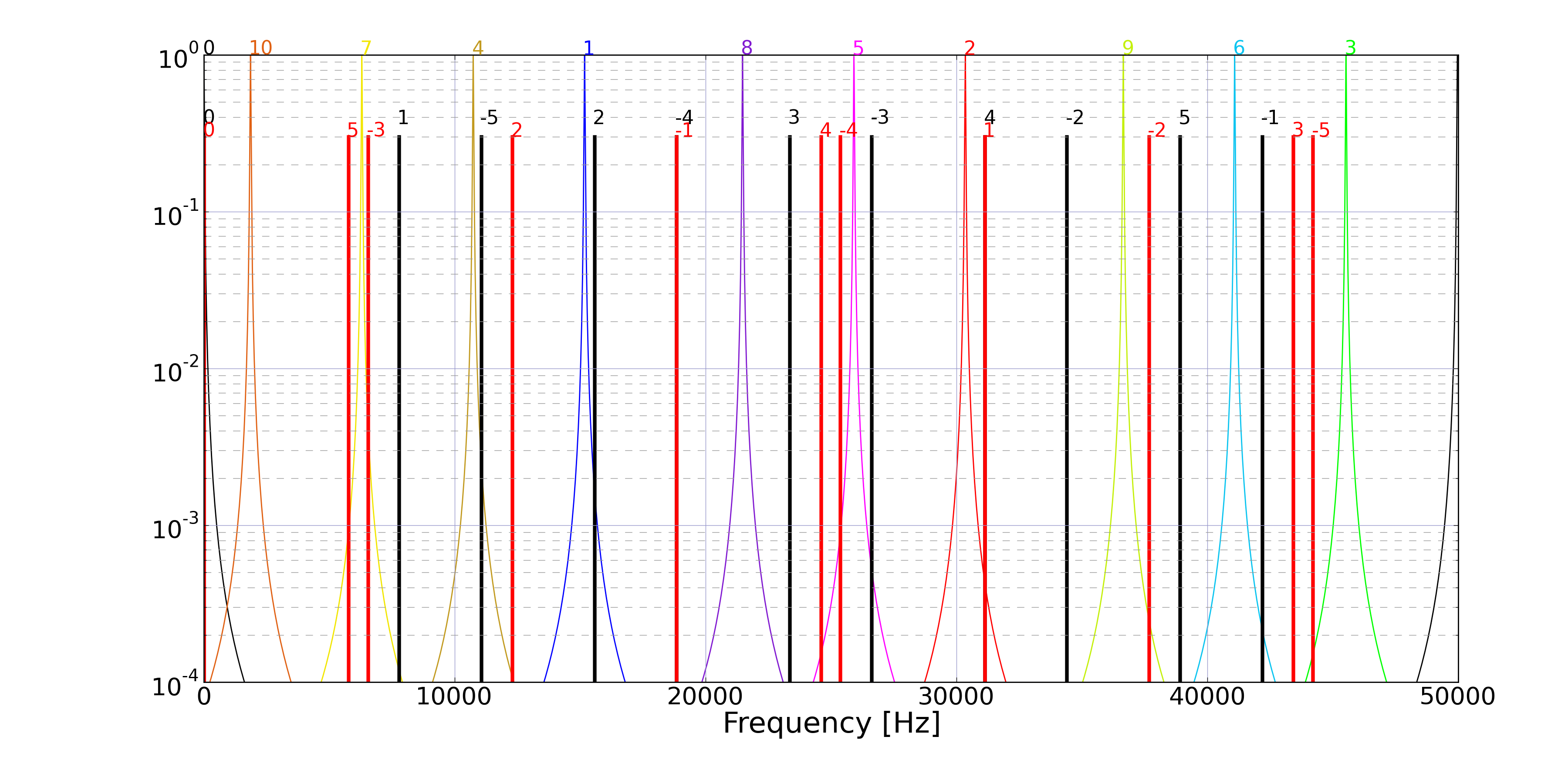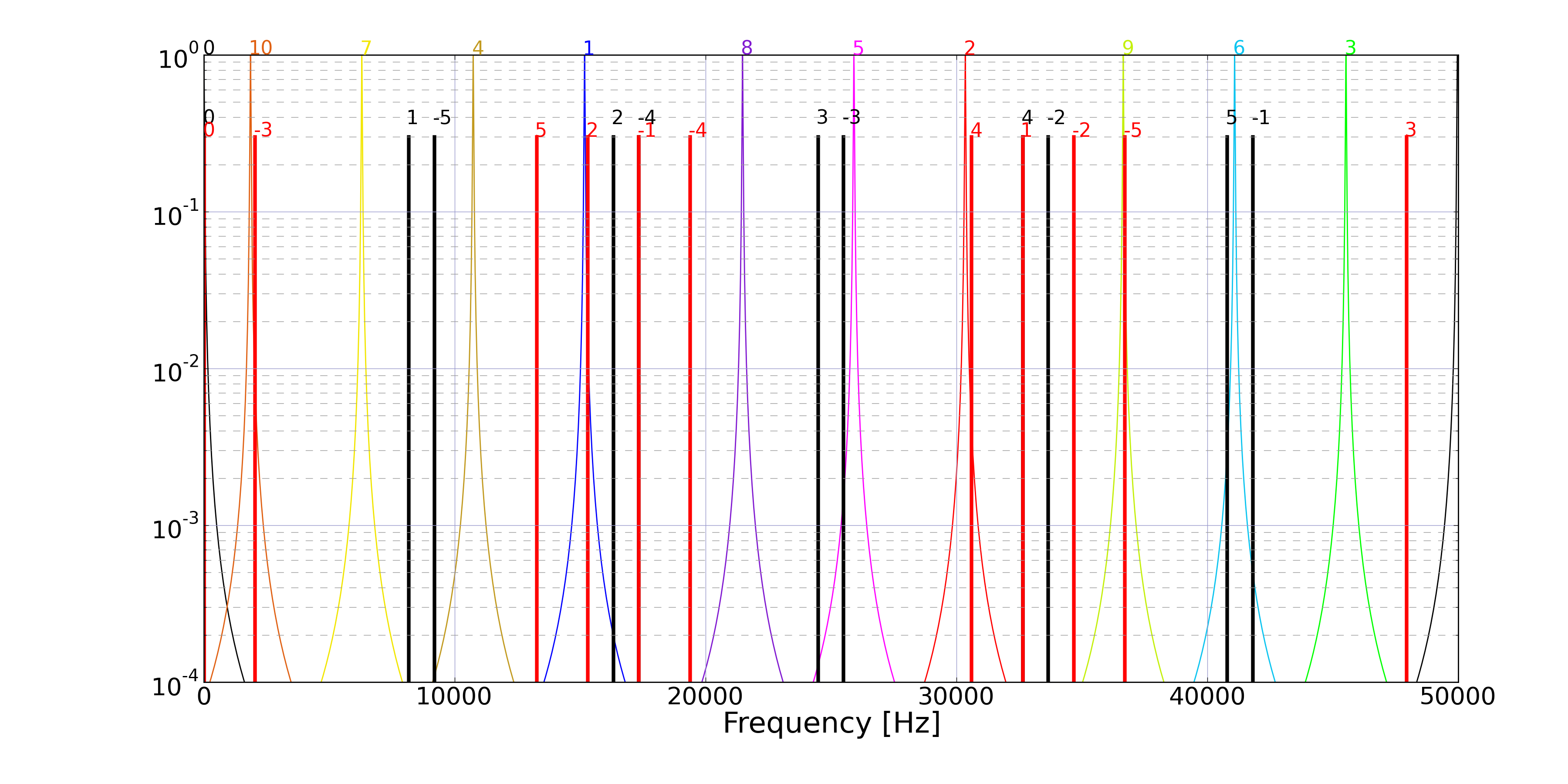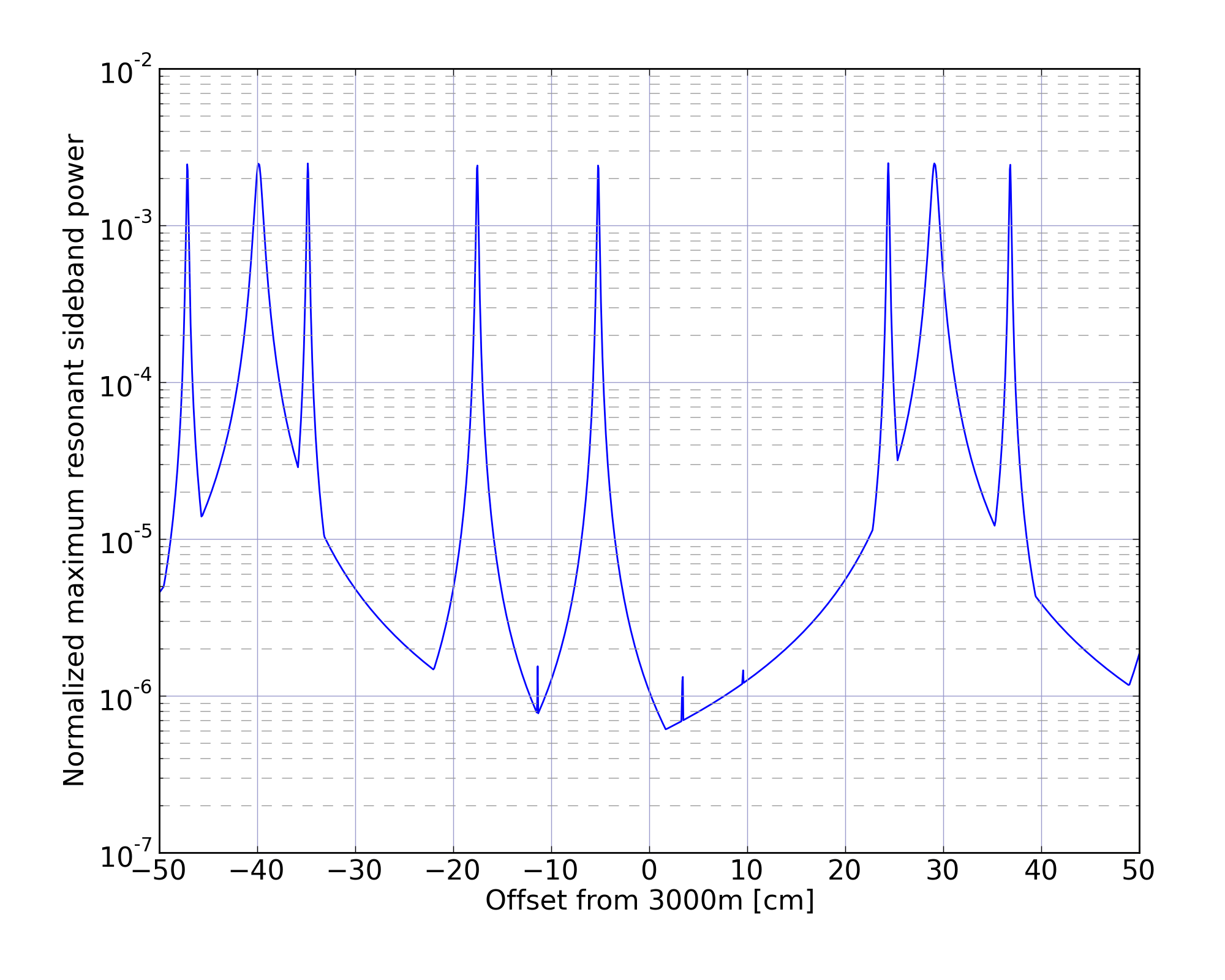|
Size: 3608
Comment:
|
Size: 3600
Comment:
|
| Deletions are marked like this. | Additions are marked like this. |
| Line 26: | Line 26: |
| The plot below shows when L=3000.30m. Still the 3rd harmonics of f2 is close to the 4th HOMs. | The plot below shows when L=3000.10m. Still the 3rd harmonics of f2 is close to the 4th HOMs. |
| Line 28: | Line 28: |
| {{attachment:HOMCheck3000d30.png||width=1000}} | {{attachment:HOMCheck3000d10.png||width=1000}} |
| Line 30: | Line 30: |
| Now, if we change the length by only 2cm, here is the plot of L=3000.32m | Now, we change the length by 6cm. Here is the plot of L=3000.16m |
| Line 32: | Line 32: |
| {{attachment:HOMCheck3000d32.png||width=1000}} | {{attachment:HOMCheck3000d16.png||width=1000}} |
Higher order mode check
FSR of the arm cavities and the RF sideband frequencies must be chosen so that the sidebands are non-resonant to the arm cavities. In addition, the higher order spatial modes of the arm cavities must not overlap with the RF sidebands. Otherwise, misalignments of the arms can resonate sidebands in the arms and introduce some instability or noise.
Relative locations of HOMs and sideband harmonics
The plot below shows the locations of sideband harmonics and the higher order mode resonances in an FSR.
The colorful curves with sharp peaks are resonant curves of the HOMs. The numbers at the top shows the order of the modes. If it is 5, it indicates the TEMnm modes with n+m=5.
The vertical lines show the sidebands and their harmonics. The black lines are the harmonics of f1(=11.25MHz) sidebands. The red lines are for f2(=45MHz). The numbers above the lines indicates the order of harmonics. For example, +/-1 are the upper and lower 1st order sidebands.
The resonant curves represents the power gain of the cavity normalized to 1 at the full resonance. The height of the sideband lines has no meaning.

You can see that some sideband harmonics are very close to HOM resonances, such as -5 of f1 and the HOMs of order 4 or -2 of f2 and the 9th HOMs. So we may want to change some parameters to move them away from the HOM resonances.
Since the FSR is about 50kHz for L=3km and the RF sidebands are tens of MHz, the sidebands reside many FSRs away from the carrier. Therefore, the relative location of the sidebands to the carrier resonance strongly depends on the arm length L. It means L is the good parameter to change. The above plot is made with exactly L=3000.0m.
The plot below shows when L=3000.10m. Still the 3rd harmonics of f2 is close to the 4th HOMs.

Now, we change the length by 6cm. Here is the plot of L=3000.16m

Maximum sideband resonance
In order to find the optimal arm length L, the maximum overlap between the sideband harmonics and the HOMs is plotted as a function of L in the following plot.
In order to create this plot, the products of the normalized arm power gains of the HOMs and the sideband power (J(n,0.1)^2 for n-th harmonics) were calculated for every combinations of HOMs and sideband harmonics. The modulation depth is assumed to be 0.1. The product is close to 1 for the carrier resonating in the cavity. Then the maximum of the products was picked and plotted in the graph. This process was repeated for various values of L to get the following graph.
Note that the coupling coefficients of the HOMs and the sidebands are ignored (i.e. just 1 for all HOMs), which is not true. Usually higher order modes have far less coupling to the incoming beam than the fundamental mode. So, the plot below gives an upper limit to the HOM-sideband coupling.
The horizontal axis of the plot below is the offset of L from 3000.0m (in cm).

From the plot above, it seems to be reasonable to choose 3000.3m as the arm cavity length.
Codes
The above plots were all created by a python script. It can be obtained from the LCGT svn.
https://granite.phys.s.u-tokyo.ac.jp/svn/LCGT/trunk/isc/OptConf/CheckHOM/
Instructions on how to use python for scientific computing can be found here.
